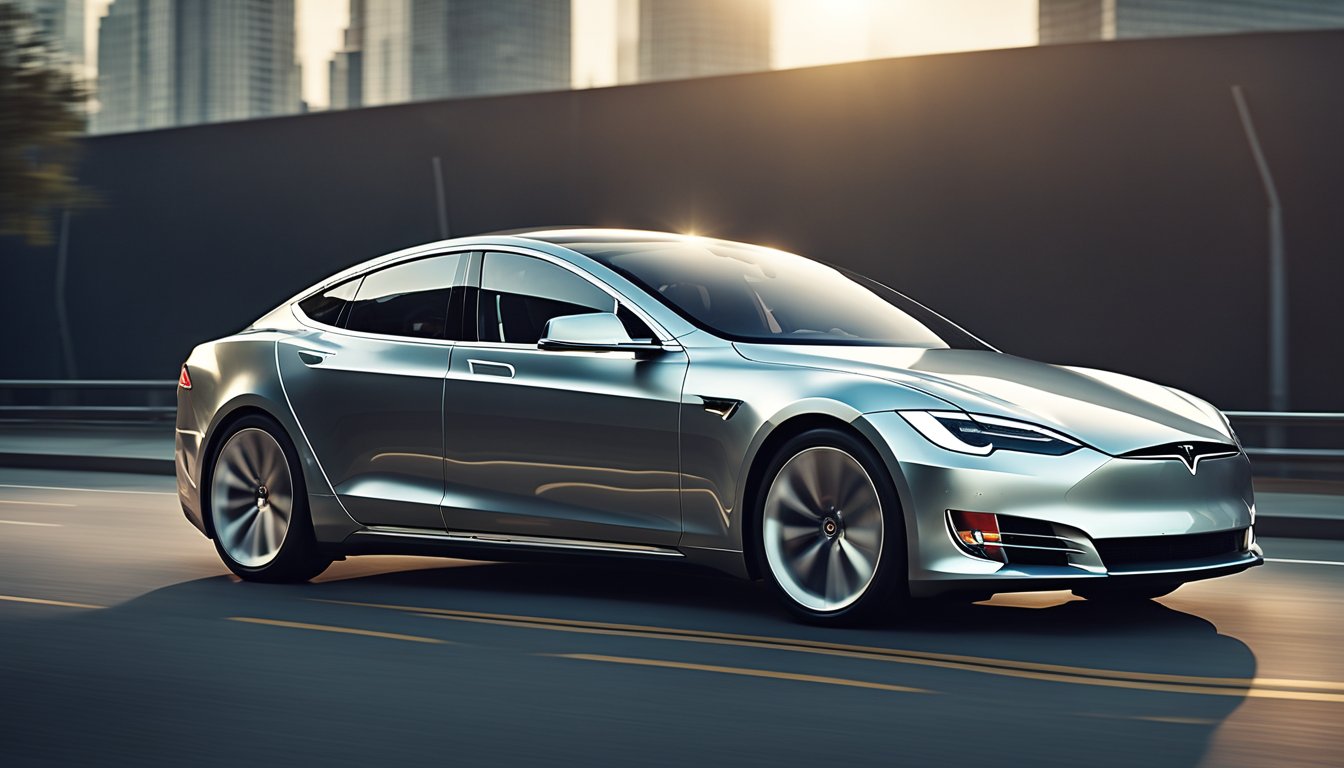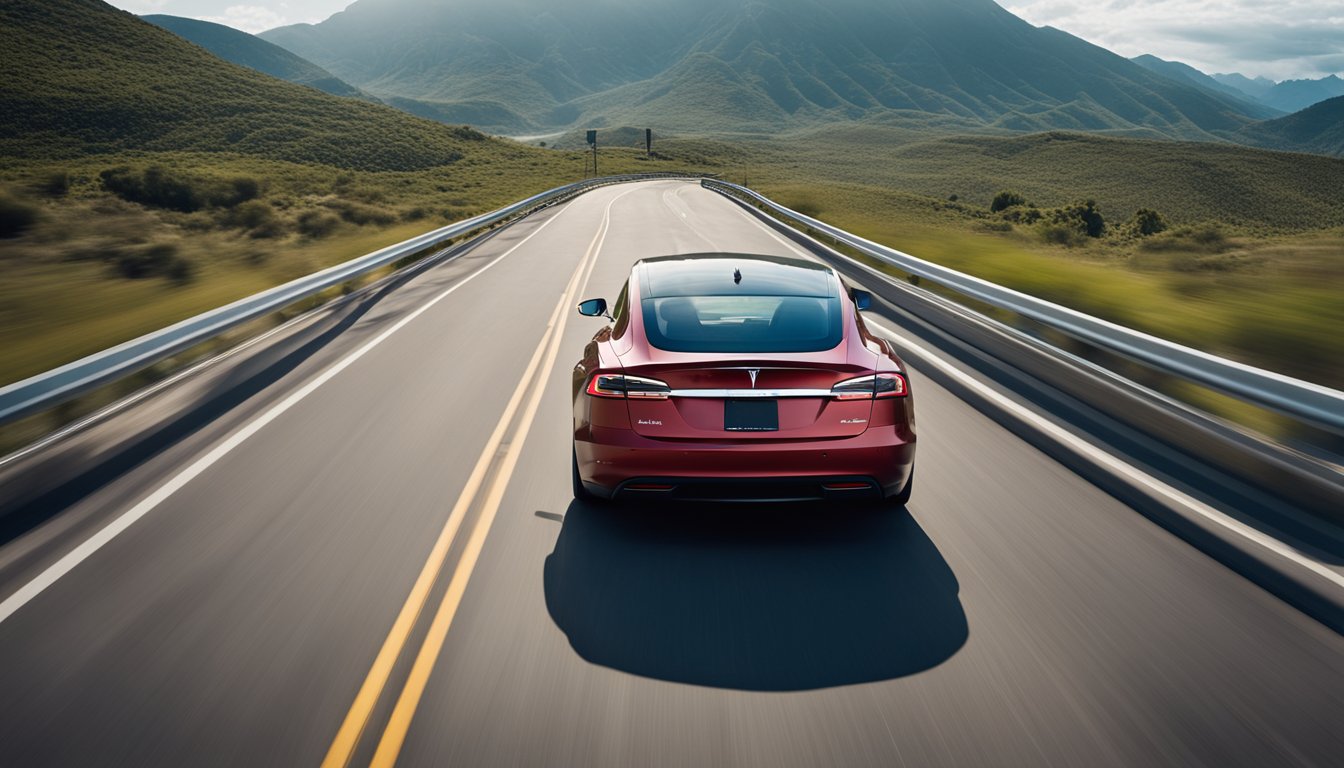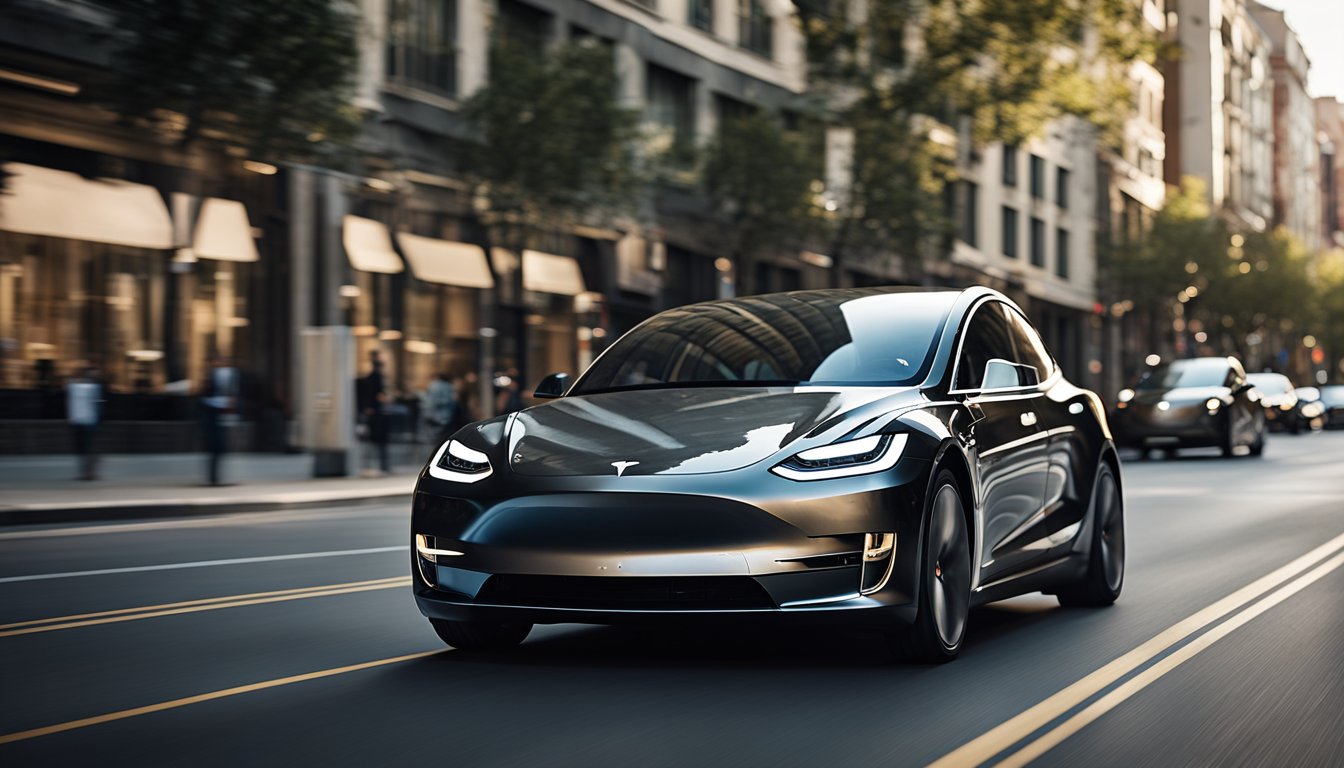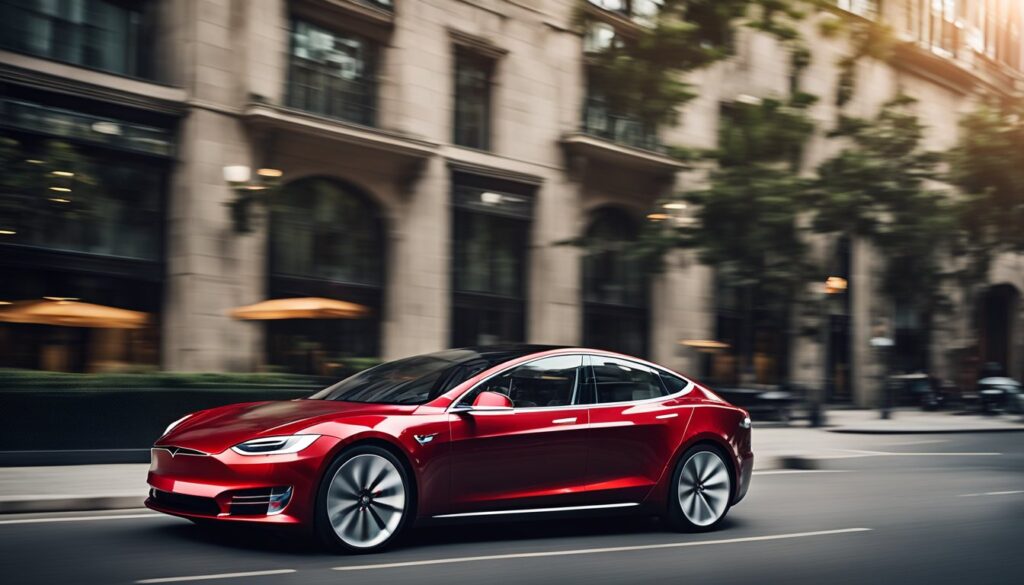As you explore the world of self-driving cars, Tesla’s Autopilot stands out as a leader in innovative technology. With advancements in artificial intelligence and real-time data processing, Tesla aims to revolutionize how you think about transportation. Tesla’s Autopilot not only promises increased safety but also offers the potential for greater convenience and efficiency in your daily commute.
You may wonder how Tesla manages to stay ahead in this fast-paced industry. The company’s commitment to continuous improvement and user feedback plays a vital role in refining its Autopilot features. By focusing on real-world performance data, Tesla seeks to enhance driver experience while tackling challenges linked to autonomous driving.
As you delve deeper into the capabilities and future of Tesla’s Autopilot, you’ll discover the critical issues surrounding safety, regulation, and the implications for society. Understanding these facets can provide valuable insights into the journey towards fully autonomous vehicles.
Evolution of Tesla Autopilot

Tesla Autopilot has transformed since its launch. Initially, it offered basic features like adaptive cruise control and lane-keeping assistance. These functions made driving easier but required constant supervision.
In 2016, Tesla introduced major updates that aimed to enhance self-driving capabilities. The system was designed to process data from cameras and sensors for a more comprehensive understanding of surroundings.
You may have heard about the partnership with MobilEye, which ended after a serious incident. This event pushed Tesla to develop its own technology, leading to the introduction of Hardware 2.0, enabling advanced features.
As the system improved, so did the cost. The Full Self-Driving (FSD) package now includes additional functions at a premium price. Many drivers believe these innovations are worth the investment for a glimpse into the future of driving.
Tesla continues to update Autopilot through software enhancements. This approach allows for increased functionality over time without requiring new hardware. You can expect features to become smarter and more capable as Tesla refines its technology.
With every update, Tesla aims to achieve fully autonomous driving. Though this goal remains a work in progress, the advancements made so far showcase the company’s commitment to revolutionizing how you drive.
How Tesla Autopilot Works

Tesla Autopilot relies on several key components that work together to provide advanced driver assistance. These components include hardware parts, software that processes data, and machine learning models that enhance driving capabilities. Understanding these elements helps you see how Tesla’s technology operates effectively.
Hardware Components
Tesla vehicles are equipped with advanced hardware that makes Autopilot possible. Each car features multiple external cameras, ultrasonic sensors, and radar systems.
- Cameras: These provide a full 360-degree view around the vehicle. They detect lane markings, other cars, pedestrians, and obstacles.
- Ultrasonic Sensors: These sensors help with parking and detect nearby objects, ensuring safer maneuvers in tight spaces.
- Radar: This component enables the vehicle to sense the speed and distance of objects ahead, even in poor weather conditions.
All these hardware elements work together to create a comprehensive view of the vehicle’s environment, which is crucial for making informed driving decisions.
Software Algorithms
Tesla’s Autopilot uses complex software algorithms to analyze data from the hardware components. These algorithms interpret information in real time, allowing the vehicle to make split-second decisions.
The software processes inputs from various sensors and cameras, applying rules and logic to understand driving scenarios. For example, it determines when to change lanes or stop at traffic signals.
These algorithms continuously improve through updates, enabling better performance and safety features over time. This adaptability allows Tesla to enhance Autopilot’s capabilities without requiring new hardware.
Data Processing
Your Tesla gathers vast amounts of data from its sensors every second. Data processing involves filtering and analyzing this information quickly to create a safe driving experience.
The onboard computer synthesizes data from cameras, radar, and sensors to construct a detailed map of the surroundings. It identifies objects, lane boundaries, and the movement of nearby vehicles.
This processed information allows the car to react to changing conditions, such as slowing down for traffic or avoiding obstacles. Efficient data processing is critical for real-time decision-making, ensuring smooth and safe drives.
Machine Learning Models
Machine learning models play a vital role in improving Tesla’s Autopilot. These models learn from vast datasets of driving scenarios, helping the system understand complex situations better.
By training on millions of miles driven by Tesla users, the models become proficient in recognizing patterns and predicting outcomes. For example, they can identify when a pedestrian may cross the road.
As Tesla collects more data from its fleet, the machine learning models continually evolve. This ongoing learning process allows the Autopilot system to become smarter and more capable, adapting to diverse driving environments and enhancing user safety.
Safety Measures and Protocols

Tesla’s Autopilot employs advanced safety measures and protocols to enhance user security and ensure safe driving experiences. Below are key elements that define how Tesla keeps drivers and passengers safe while using Autopilot technology.
Real-Time Monitoring
Tesla vehicles are equipped with complex sensors and cameras that provide real-time monitoring of the driving environment. This system constantly scans for obstacles, lane markings, and other vehicles.
The data gathered is analyzed at high speeds to make immediate driving decisions. If the system detects any unsafe conditions, it alerts the driver through visual and auditory warnings.
You are encouraged to remain attentive and ready to intervene, as the system is designed to assist, not fully replace human judgment.
Override Systems
Tesla’s Autopilot incorporates override systems that give drivers control at all times. If you feel uncomfortable or if the system detects a problem, you can quickly take over driving.
The vehicle allows you to manually disengage Autopilot by simply turning the steering wheel. This feature ensures that you have the final say in driving decisions.
The system also monitors driver engagement. If it senses that your hands are off the wheel for too long, it prompts you to take control, further promoting safety.
Fail-Safe Operations
Fail-safe mechanisms are an essential part of Tesla’s safety protocols. These systems are designed to maintain vehicle control in the event of a malfunction.
For instance, if one sensor fails, others can compensate, allowing the vehicle to continue operating safely. If a critical failure occurs, the vehicle may slow down and safely come to a stop.
You can trust that your safety is prioritized. These measures are in place to help prevent accidents and to ensure a smooth and secure driving experience.
Regulatory Landscape

The regulatory landscape for Tesla’s Autopilot features various rules and standards that ensure safety and promote innovation. The rules often vary by region, influencing Tesla’s operations and development.
Current Regulations
In the United States, the National Highway Traffic Safety Administration (NHTSA) oversees vehicle safety standards, including those for automated driving systems. Tesla’s Autopilot operates under Level 2 autonomy, meaning you still need to be in control while using it.
The NHTSA has raised concerns about incidents where Autopilot failed to recognize stationary emergency vehicles. This scrutiny often leads to investigations and pressures for compliance with evolving safety standards. Fines and recalls can result from these investigations, impacting Tesla’s operations significantly.
Certification Processes
Before placing vehicles on the market, manufacturers like Tesla must adhere to stringent certification processes for their Autopilot system. This typically involves extensive testing to demonstrate safety and reliability.
During the certification, Tesla must provide data showing that its Autopilot systems meet federal safety requirements. You may notice that the vehicle’s features undergo continuous updates, reflecting recent findings or changes in regulations. Maintaining compliance is an ongoing necessity, keeping Tesla responsive to regulatory bodies.
Global Standards
Globally, standards for autonomous driving technology vary widely. In Europe, for example, regulations are often stricter concerning data usage and driver privacy compared to the U.S.
Organizations such as the International Organization for Standardization (ISO) are crucial in developing consistent standards. You might find Tesla adapting its technology based on these international guidelines as they seek to enter new markets. Compliance with global standards is vital for ensuring safety and gaining customer trust across various regions.
Consumer Adoption

As Tesla’s Autopilot features evolve, consumer adoption plays a crucial role in shaping its future. You will find insights on market trends, user experience, and ownership implications that highlight how these factors influence the acceptance of self-driving technology.
Market Trends
Consumer interest in autonomous vehicles is growing. According to recent studies, many potential buyers show a willingness to adopt self-driving features, particularly among younger generations.
Key market trends include:
- Increased Awareness: As more vehicles with advanced driver-assistance systems enter the market, awareness increases.
- Acceptance of Technology: With Tesla’s consistent updates and innovations, consumers are becoming more comfortable with Autopilot systems.
Surveys indicate that safety and convenience are two major driving factors behind consumer interest. As technology improves, many expect prices to become more competitive.
User Experience
Your experience with Tesla’s Autopilot is critical for adoption. Users often highlight the system’s intuitive interface and user-friendly design.
Important aspects include:
- Ease of Use: The autopilot feature is designed to allow smooth transitions between manual and automated driving. You can activate it easily with a simple command.
- Real-Time Updates: Regular software updates add new features and improve performance, enhancing user satisfaction over time.
Many users appreciate the level of control offered, allowing you to customize settings based on your driving style. Feedback loops between Tesla and users aid in rapid improvements.
Ownership Implications
Owning a Tesla with Autopilot features can change your driving experience significantly. There are both practical and financial implications.
Consider the following:
- Insurance Rates: Tesla owners may find that insurance companies offer discounts for vehicles equipped with advanced safety features.
- Resale Value: Vehicles with self-driving capabilities may retain higher resale values as autonomous technology becomes mainstream.
Ultimately, these factors can enhance your car ownership experience. Awareness about expected software updates and improvement can also affect your decision to invest in Tesla’s technology.
Ethical Considerations

As self-driving technology advances, several ethical considerations come to the forefront. These involve moral decision-making in emergencies, privacy concerns related to data management, and questions of who is liable in case of accidents.
Moral Decision Making
When faced with emergency situations, self-driving cars may need to make split-second decisions that affect lives. For example, if an accident is unavoidable, should the vehicle prioritize the safety of its passengers or pedestrians?
This dilemma raises significant ethical questions. Some argue that programming a vehicle to choose between human lives is morally wrong. Others believe that developing algorithms that can navigate these situations is essential for the technology’s future. You must think about how your vehicle’s decisions are made and whether they align with your values.
Privacy Issues
Self-driving cars collect and analyze large amounts of data to function effectively. This data includes information about your location, driving habits, and even personal preferences.
Such collection raises important privacy concerns. How secure is this data? Who has access to it? You should be aware that data breaches could expose sensitive information. Companies need to ensure robust cybersecurity measures to protect user data.
You have the right to know how your information is used and shared. Transparency in data handling is crucial for fostering trust in autonomous vehicle technology.
Liability and Accountability
Determining liability in accidents involving self-driving cars is complex. If a car is involved in a crash, who should be held responsible? Is it the manufacturer, the software developer, or the car owner?
Legal frameworks are still catching up with this technology. Current laws may not adequately address these new scenarios. You should consider how accountability will be assigned in various situations.
Clear guidelines will be vital for future legal action and insurance claims. You may need to stay informed about evolving laws that pertain to autonomous vehicles to understand your rights and responsibilities.
Future Developments

Tesla’s Autopilot is set to undergo significant changes in the coming years. These advancements will focus on technology improvements, better integration with smart systems, and expanding into new regions around the globe.
Technological Advancements
Your experience with Tesla’s Autopilot will evolve as the company continues to innovate. Upcoming software updates aim to enhance the vehicle’s decision-making capabilities. These updates will utilize advanced machine learning algorithms.
Moreover, Tesla plans to improve its sensor systems. This could involve new cameras and radar systems for better environmental awareness. The goal is to create a system that can accurately predict and react to various road conditions.
As the technology matures, you can expect increased reliability. Innovations like better obstacle detection and improved lane-keeping functions will enhance safety. The focus remains on making self-driving technology more intuitive for drivers.
Integration with Smart Infrastructure
Future Tesla vehicles will connect more seamlessly with smart city infrastructure. This connection aims to optimize traffic flow and reduce congestion. Through vehicle-to-infrastructure (V2I) communication, your Tesla might receive real-time updates about traffic signals and road conditions.
Imagine your car adjusting its speed based on upcoming traffic lights. This ability to communicate could lead to a more efficient driving experience. The integration also includes connections to charging stations, allowing for automatic route adjustments.
This smart infrastructure will make driving safer and more enjoyable. As cities become smarter, your Tesla will become even more capable of navigating urban landscapes.
Expansion into New Markets
Tesla is not only focused on technological growth but also on expanding its global reach. You may soon find Tesla’s Autopilot in more countries as the company navigates various regulatory environments.
Understanding local laws is crucial for this expansion. Tesla will adapt its technology to meet international standards. For example, features might be modified based on different road rules or driving customs.
With more vehicles on the road equipped with Autopilot, you can expect an increase in data collection. This data will help improve algorithms, ultimately enhancing the system’s performance across diverse driving conditions.
Environmental Impact

Tesla’s advancements in self-driving technology also play a significant role in its environmental impact. This includes aspects such as energy efficiency, emissions reduction, and sustainable practices. Each of these areas highlights how Tesla aims to create a greener future through innovative technology.
Energy Efficiency
Tesla vehicles utilize advanced software and hardware to maximize energy efficiency. The Autopilot system enables smoother driving patterns, which helps conserve battery life. For example, regenerative braking captures energy usually lost during deceleration, sending it back to the battery.
By reducing unnecessary acceleration and optimizing speed on highways, your Tesla can achieve greater mileage per charge. The use of lightweight materials and aerodynamic designs further enhances energy efficiency, allowing you to travel further while using less energy.
Emissions Reduction
Electric vehicles, including those from Tesla, contribute to a significant reduction in greenhouse gas emissions compared to traditional gas-powered cars. When driven in regions where the grid is powered by renewable energy sources, your Tesla has a notably lower carbon footprint.
Additionally, Tesla’s commitment to developing a sustainable supply chain means that even the manufacturing processes aim to minimize emissions. By improving battery technology and exploring alternative materials, Tesla is working towards reducing the environmental impacts associated with electric vehicle production.
Sustainable Practices
Tesla is dedicated to sustainable practices across its operations. From utilizing renewable energy at its Gigafactories to sourcing materials responsibly, the company focuses on reducing its impact on the planet.
Your Tesla is made with components that follow strict sustainability standards. This includes efforts to recycle batteries at the end of their life cycle. Tesla’s innovative recycling processes aim to recover valuable materials, further promoting a circular economy. These practices help ensure that the creation and operation of Tesla vehicles are as environmentally friendly as possible.


